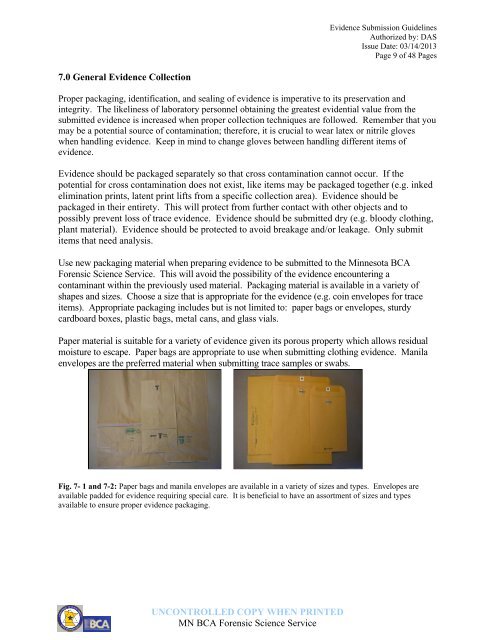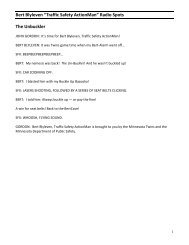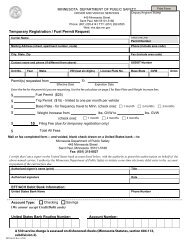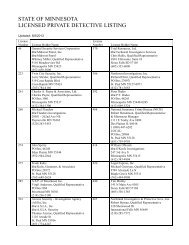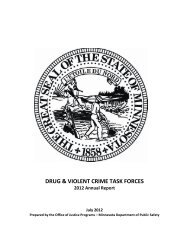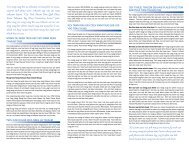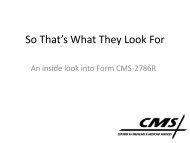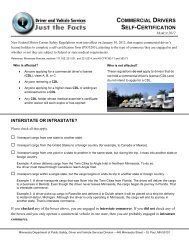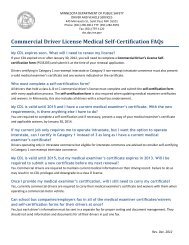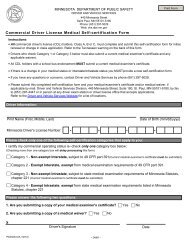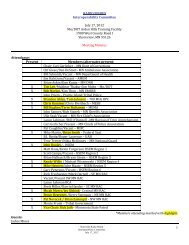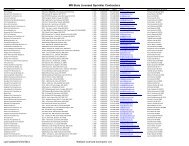Evidence Submission Guidelines - Minnesota Department of Public ...
Evidence Submission Guidelines - Minnesota Department of Public ...
Evidence Submission Guidelines - Minnesota Department of Public ...
You also want an ePaper? Increase the reach of your titles
YUMPU automatically turns print PDFs into web optimized ePapers that Google loves.
7.0 General <strong>Evidence</strong> Collection<br />
UNCONTROLLED COPY WHEN PRINTED<br />
MN BCA Forensic Science Service<br />
<strong>Evidence</strong> <strong>Submission</strong> <strong>Guidelines</strong><br />
Authorized by: DAS<br />
Issue Date: 03/14/2013<br />
Page 9 <strong>of</strong> 48 Pages<br />
Proper packaging, identification, and sealing <strong>of</strong> evidence is imperative to its preservation and<br />
integrity. The likeliness <strong>of</strong> laboratory personnel obtaining the greatest evidential value from the<br />
submitted evidence is increased when proper collection techniques are followed. Remember that you<br />
may be a potential source <strong>of</strong> contamination; therefore, it is crucial to wear latex or nitrile gloves<br />
when handling evidence. Keep in mind to change gloves between handling different items <strong>of</strong><br />
evidence.<br />
<strong>Evidence</strong> should be packaged separately so that cross contamination cannot occur. If the<br />
potential for cross contamination does not exist, like items may be packaged together (e.g. inked<br />
elimination prints, latent print lifts from a specific collection area). <strong>Evidence</strong> should be<br />
packaged in their entirety. This will protect from further contact with other objects and to<br />
possibly prevent loss <strong>of</strong> trace evidence. <strong>Evidence</strong> should be submitted dry (e.g. bloody clothing,<br />
plant material). <strong>Evidence</strong> should be protected to avoid breakage and/or leakage. Only submit<br />
items that need analysis.<br />
Use new packaging material when preparing evidence to be submitted to the <strong>Minnesota</strong> BCA<br />
Forensic Science Service. This will avoid the possibility <strong>of</strong> the evidence encountering a<br />
contaminant within the previously used material. Packaging material is available in a variety <strong>of</strong><br />
shapes and sizes. Choose a size that is appropriate for the evidence (e.g. coin envelopes for trace<br />
items). Appropriate packaging includes but is not limited to: paper bags or envelopes, sturdy<br />
cardboard boxes, plastic bags, metal cans, and glass vials.<br />
Paper material is suitable for a variety <strong>of</strong> evidence given its porous property which allows residual<br />
moisture to escape. Paper bags are appropriate to use when submitting clothing evidence. Manila<br />
envelopes are the preferred material when submitting trace samples or swabs.<br />
Fig. 7- 1 and 7-2: Paper bags and manila envelopes are available in a variety <strong>of</strong> sizes and types. Envelopes are<br />
available padded for evidence requiring special care. It is beneficial to have an assortment <strong>of</strong> sizes and types<br />
available to ensure proper evidence packaging.


